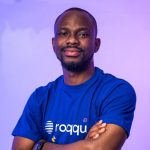In today’s digital world, the way we store and share files has changed dramatically. Gone are the days of carrying USB flash drives everywhere. With free cloud storage, your files are securely saved online and accessible from anywhere, on any device.
The good news? You don’t need to pay to get started. Major providers like Google Drive, Microsoft OneDrive, and Dropbox offer free storage plans, making it easy for beginners to experience the convenience of the cloud. This guide will walk you through everything you need to know to get started.
What is Free Cloud Storage?
Free cloud storage is an online service that allows you to freely save files (documents, photos, videos, music, etc.) on remote servers managed by tech companies. Instead of storing data only on your phone or laptop, your files are stored “in the cloud” and can be accessed from any internet-connected device.
Benefits include:
- Accessibility: Access files anywhere, anytime.
- Backup & Security: Protects against device loss or damage.
- Collaboration: Easily share files with others.
Free Cloud Storage Options
1. Google Drive
- Free Storage: 15 GB (shared across Google Drive, Gmail, and Google Photos).
- Best for: People already using Gmail, Android, or other Google services.
- Features:
- Real-time collaboration with Google Docs, Sheets, and Slides.
- Easy file sharing with links or permissions.
- Accessible on web, desktop, and mobile apps.
2. Microsoft OneDrive
- Free Storage: 5 GB.
- Best for: Windows users and Office 365 subscribers.
- Features:
- Seamless integration with Windows 10/11.
- Works with Microsoft Word, Excel, and PowerPoint.
- Secure file sharing and version history.
3. Dropbox
- Free Storage: 2 GB.
- Best for: Simple file sharing and syncing across multiple devices.
- Features:
- Fast syncing between desktop and mobile devices.
- File requests (others can send files to your Dropbox).
- Easy integration with third-party apps.
How to Get Started with Free Cloud Storage
Step 1: Sign Up for an Account
- Google Drive → [drive.google.com](https://drive.google.com) (use Gmail).
- OneDrive → [onedrive.com](https://onedrive.com) (use Microsoft account).
- Dropbox → [dropbox.com](https://dropbox.com).
Step 2: Install the App
Download the app on your smartphone or computer to easily sync files across devices.
Step 3: Upload Files
- Click Upload (or drag and drop files).
- Organize with folders for easy navigation.
Step 4: Share Files
- Right-click a file → Get link → choose permissions (view, edit, comment).
- Share with colleagues, friends, or family instantly.
Step 5: Manage Storage
- Regularly delete unnecessary files.
- Use compression or cloud-cleaning tools to free space.
Tips for Maximizing Free Cloud Storage
- Use multiple services: Combine free plans (e.g., 15GB from Google Drive + 5GB from OneDrive + 2GB from Dropbox = 22GB total).
- Compress files: Upload .zip versions to save space.
- Use selective sync: Only sync important folders to avoid clutter.
- Backup photos: Enable auto-backup for mobile photos and videos.
FAQs on Using Free Cloud Storage
Which free cloud storage is best for beginners?
Google Drive is often the best starting point because it offers the most free space (15GB) and integrates seamlessly with Gmail and Google Docs.
Can I use more than one free cloud storage service at the same time?
Yes. Many users combine services to maximize free space. For example, you can use Google Drive for documents, OneDrive for school/work files, and Dropbox for sharing media.
Are free cloud storage services safe?
Yes. All three providers use encryption and secure servers. However, always enable two-factor authentication (2FA) for added security.
Can I access files offline?
Yes. Each service has an offline mode. For example, Google Docs can be made available offline, and Dropbox allows offline access on mobile apps.
What happens if I run out of free storage?
You can delete old files, use multiple free accounts, or upgrade to a paid plan for more space. Paid plans usually start at affordable monthly rates.





